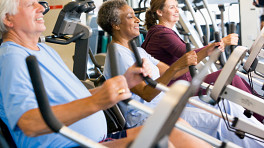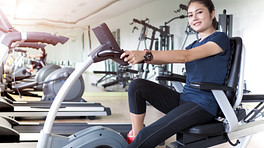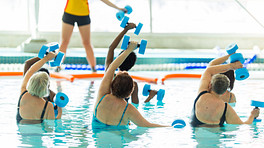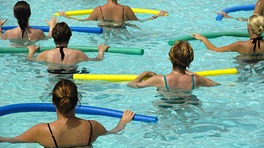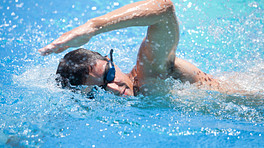There are three general types of exercise that are recommended for those with arthritis.
- Flexibility and range-of-motion exercises. Gentle stretching should be done daily and is especially important before beginning a workout. Stretching will also help promote relaxation and help prevent future injury to the joint. Recommended exercises for flexibility and range-of-motion can include tai chi, Pilates, and modified yoga.
- Strength and resistance exercises. Strong muscles greatly reduce the amount of stress placed on arthritic joints. Strengthening exercises also help muscles develop shock-absorbing abilities to protect joints from further pain and injury.
Supervised weight training and resistance band programs can be customized to each patient and are easily adapted as the patient progresses.
- Aerobic exercise. Aerobic exercises use the large muscle groups in the body and teach the cardiovascular system (heart, lungs, blood vessels) to work more efficiently. This type of exercise also improves endurance, strengthens bones, enhances sleep and mood, and helps control weight. Low-impact aerobic exercises are preferred by many arthritis patients, and include swimming, water aerobics, stationary biking, and walking.
See Knee Exercises for Arthritis and Shoulder Exercises for Arthritis
Body awareness is also important for people with arthritis, which refers to knowing how the body and joints are positioned such as with posture, balance, and coordination. This can be particularly helpful for people with impaired joint awareness, such as with those who have had a joint replaced or have both joint and muscle problems from arthritis; these conditions can increase the risk of falling especially when body awareness is poor. Certain activities and exercises may be prescribed for body awareness, such as yoga.
In This Article:
- Exercising with Arthritis
- Ways to Get Exercise When You Have Arthritis
In addition to structured exercise programs, there are a number of lifestyle and recreational activities that can be beneficial if done carefully. Examples include golf, cycling, hiking, raking, or gardening. The most important thing is that the individual picks an activity that is both comfortable and enjoyable so that he or she will stick with it.
Recommended Arthritis Exercises
The goal for any exercise program is to pick an enjoyable activity that can be done regularly and is easy to stick with. While exercise is a good idea for everyone, it is especially important for people suffering from arthritis. In addition to reducing joint pain and stiffness, exercise helps patients improve flexibility, muscle strength, and overall fitness.
Explore symptoms and treatments for your arthritic condition in Types of Arthritis
The American College of Rheumatology categorizes exercise into three levels for people with arthritis, starting with the most controlled:
- Therapeutic and rehabilitative exercises. These exercises are given to the patient by a health professional and address the specific joints or parts of the body affected by arthritis, such as the hip or knee. This level is the starting point for previously inactive patients or patients recovering from surgery.
There are also exercise classes designed for people with arthritis who enjoy a group setting, plus exercise videos demonstrating safe arthritis exercises.
- Recreational and leisure activities. These types of exercises can range from swimming and walking to skiing or running. The important thing is that each activity needs to be performed in a controlled manner and places an appropriate amount of stress on the affected joints. These are often performed in conjunction with therapeutic exercises.
- Competitive or elite level activities. These are activities that are usually very intense and whose participants must have training and a certain amount of skill to compete, such as marathon running or competitive gymnastics. These activities can be particularly problematic for people with inflammatory arthritis like rheumatoid arthritis and for people whose arthritis could get exacerbated from the activity itself. Participation in high-level activities will depend on the extent of arthritis and the patient's response to training for this level of activity.


